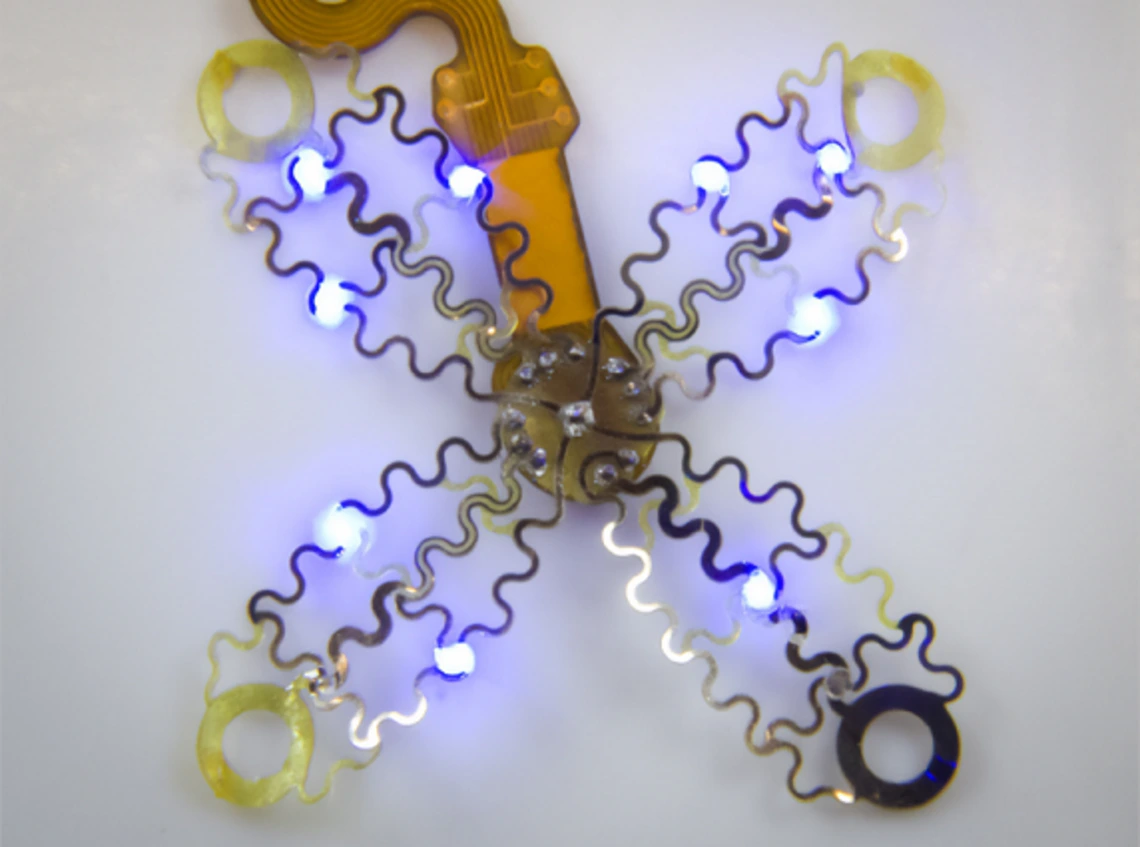Researchers Develop Light-Powered Pacemaker

Pacemakers are lifesaving devices that regulate the heartbeats of people with chronic heart diseases like atrial fibrillation and other forms of arrhythmia. However, pacemaker implantation is an invasive procedure, and the lifesaving pacing the devices provide can be extremely painful. Additionally, pacemakers can only be used to treat a few specific types of disease.
In a paper published in Science Advances, a University of Arizona-led team of researchers details the workings of a wireless, battery-free pacemaker that could be implanted with a less invasive procedure than currently possible and that would cause patients less pain. The study was helmed by researchers in the Gutruf Lab, led by BME assistant professor and Craig M. Berge Faculty Fellow Philipp Gutruf.
Currently available pacemakers work by implanting one or two leads, or points of contact, into the heart with hooks or screws. If the sensors on these leads detect a dangerous irregularity, they send an electrical shock through the heart to reset the beat.
"Current pacemakers record basically a simple threshold, and they will tell you, 'This is going into arrhythmia, now shock!'" Gutruf said. "But this device has a computer on board where you can input different algorithms that allow you to pace in a more sophisticated way. It's made for research."
